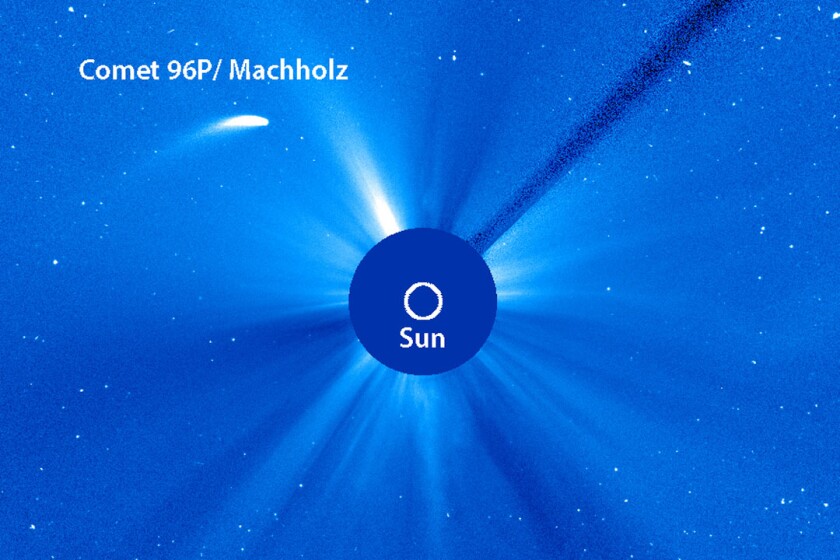While we've all been staring at the northern sky hoping to see Comet ZTF (C/2022 E3), another comet has been rapidly approaching the sun and brightening. Every 5.3 years, Comet 96P/Machholz swings into the inner solar system, passes incredibly close to the sun and then flies back out to just beyond Jupiter. Right now the comet shines around magnitude 0 and would make a stunning naked-eye sight were it not completely lost to view in the sun's glare.

Only orbiting spacecraft can keep track of it because they don't have to deal with Earth's atmosphere which scatters sunlight and makes the sky bright. Once 96P/Machholz swings around the sun it will head back beyond Jupiter and appear in the morning sky at dawn. Sadly, it's expected to fade quickly. Only the most experienced observers might see as a faint fuzzball in mid-February through 8-inch or larger telescopes.
That doesn't mean we can't tag along for the ride and follow the comet on its perilous route. Thanks to modern technology it's no problem. Just go to soho.nascom.nasa.gov/data/realtime-images.html and click on the blue LASCO C3 picture for the latest images. The photos were taken with a coronagraph , an instrument that blocks the sun so we can see what happening around it. Most of the white specks are stars, and the streamers poking out from the sun are part of its atmosphere called the corona.

Tuesday, Jan. 31, marks the comet's closest approach to the sun, called perihelion. For a brief time, 96P/Machholz skimmed just 11.4 million miles (183.5 million km) from the sizzling solar surface, three times closer than Mercury, where the temperature on the planet's sunny side climbs to 800 degrees F (430 degrees C). Since comets are composed primarily of ice, I'm sure the sun is having a field day beating down on our fuzzy friend and vaporizing a significant amount of its frozen booty.
Not to worry. With a diameter of 4 miles (6.4 km) 96P has plenty to spare. Most small comets that pass this close to the sun are around 32 feet (10 meters) across and get thoroughly vaporized. But Don's comet has been this way many times before, and unless something unexpected happens we should see it again in 2028.
ADVERTISEMENT

Astronomers consider 96P/Machholz more than a little peculiar. Lots of returning comets have elongated or "stretched out" orbits, but very few approach the sun so closely. A 2008 study of the gases released by 150 comets revealed that 96P has very low amounts of carbon and a chemical compound called cyanogen made of carbon and nitrogen. These oddities point to a different origin either in some remote part of the solar system or from a different one altogether.
It's possible that 96P/Machholz passed close enough to a giant planet in another solar system to be ejected into interstellar space. Marooned for eons, it got a second chance at a warm home when Jupiter's gravity snared it and brought it into the fold. Astronomers will be studying the comet closely at this perihelion hoping for more clues to its origin. You and I can watch the fascinating changes it's undergoing with a few taps on our phones.













